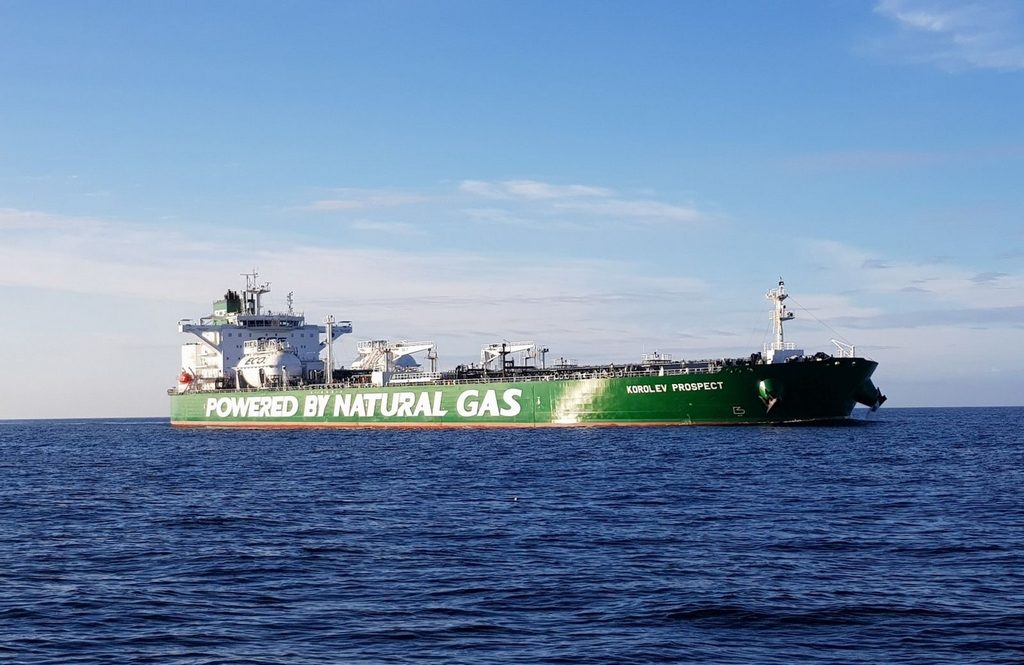News review of the events on the NSR
#1 September 2019

1. Nuclear container ship Sevmorput delivered cargo from Kamchatka to St. Petersburg via the NSR
On September 15, the world’s only nuclear container ship Sevmorput successfully completed transit via the Northern Sea Route from Petropavlovsk-Kamchatsky to St. Petersburg. The voyage took 18 days and went normally.
In one voyage, it delivered from the east of Russia to its northwest 204 refrigerated containers with frozen fish and 66 containers with another cargo with a total weight of 8 thousand tons.
“This voyage once again showed the possibilities of the Northern Sea Route in terms of transporting various cargoes,” said Mustafa Kashka, Director General of Atomflot. “The voyage, organized by Rosatom together with Federal Fishery Agency and Norebo fish holding, should be a reserve for our further joint work and an excellent example for shipowners who also plan to use the Northern Sea Route more actively.”
Sevmorput is the only operational transport vessel in the world with a nuclear power plant. Key parameters: nuclear power plant capacity – 29 MW (40,000 hp); length is 260.23 m; width is 32.2 m; GRT – 61880 tons; DWTt – 33980 tons. Able to transport ISO 20 containers in the amount of 1320 pcs. or ISO 40 containers in the amount of 428 pieces.
2. Indian companies have not yet decided to participate in the Arctic project of Rosneft
Potential Rosneft partners from India can make a final decision on participating in the project “Vostok Oil” after the issue of investment incentives for the project becomes clear. This issue was discussed during the recent negotiations between company head Igor Sechin and Indian Energy Minister Dharmendra Pradhan in New Delhi.
Rosneft believes that the project can be considered as the basis of the energy bridge between Russia and India, which will ensure the energy security of India in the face of increasing geopolitical risks. As part of “Vostok Oil” project, it is planned to develop the Lodochnoye, Tagulskoye and Vankorskoye deposits. The Payakhskoye field of Neftegazholding company may also become part of it. Russian companies are planning to invest from 5 trn to 8.5 trn rubles in this project.
3. Samsung and Zvezda will construct shuttle tankers and gas carriers
The Russian shipbuilding complex Zvezda and the Korean Samsung Heavy Industries signed two important agreements.
The first agreement to establish a joint venture for the construction of shuttle tankers. Samsung will provide the Russian shipyard with technical specifications and documentation of the basic and detailed design of the vessels, as well as help with the development of detailed design documentation for shuttle tankers. In addition, the Korean company will technically support the management, quality control of construction and installation works, procurement of materials and equipment, as well as train Russian personnel at its shipyard.
Shuttle tankers are planned to be built with a deadweight of 42 thousand to 120 thousand tons. The second agreement is that Samsung Heavy Industries will design gas carriers for Arctic LNG-2 project, and Zvezda shipyard will build them.
Gas carriers will meet all the requirements of Russian legislation, which will make them fully Russian. This will be the first ever construction of ships of this type at a Russian shipyard. The design will allow gas carriers to overcome ice up to 2.1 m thick. The project will be financed by the Russian bank VEB. It will provide a loan of approximately $ 5 bln. The cost of one ship is about $ 330 mln.
4. Tanker that works on LNG first crossed the Northern Sea Route
The Russian large-capacity oil tanker “Prospect Koroleva” was the first ship in the world that crossed the Northern Sea Route using liquefied natural gas as fuel. It is considered to be an environmentally cleaner gas engine fuel.
The tanker belongs to Sovcomflot, it has ice class Arc4, draft of 15 me. It went on a voyage with a cargo of crude oil from Murmansk and headed for the ports of China. Over the past 9 years, this was the first transit via NSR with crude oil. A voyage of 2118 nautical miles took a little more than seven days with a planned figure of eight days, the average speed was 12.2 knots with a planned 12. Favorable weather and ice conditions helped to improve passage with full compliance with the rules and safety standards of navigation. The ship covered the entire route along the NSR without icebreaking support. On this voyage, Sovcomflot showed that navigation along the Northern Sea Route can be environmentally friendly.
